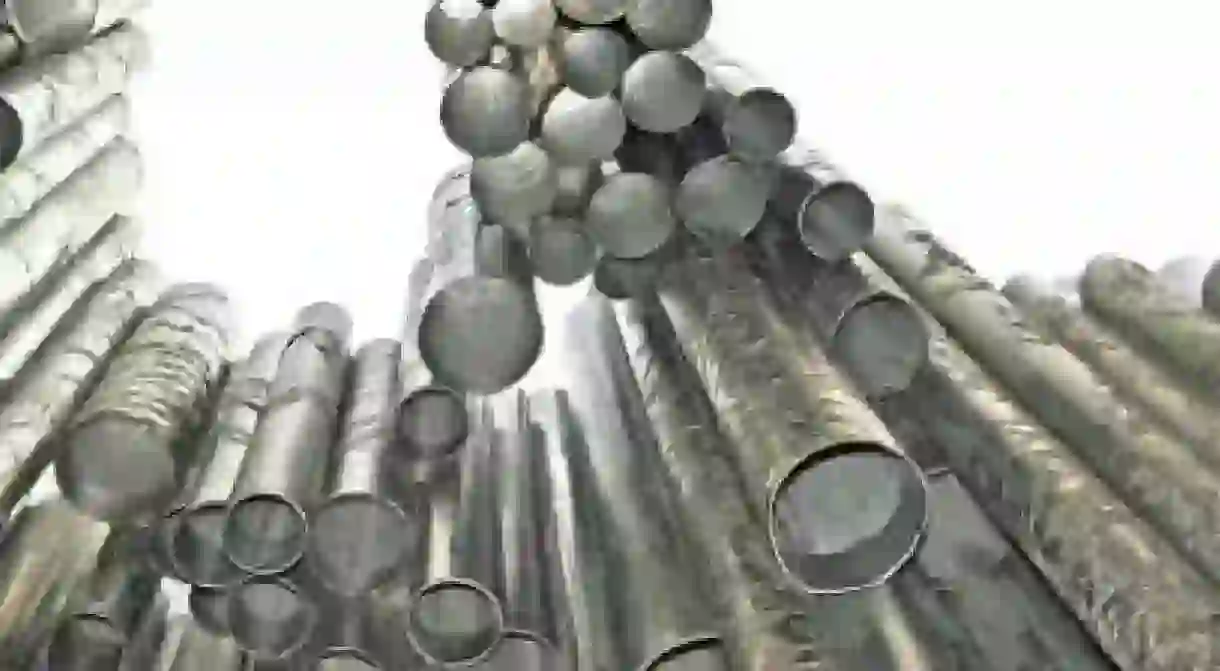The Top 7 Things To Do in Töölö, Helsinki

Housing the iconic cultural and parliamentary institutional buildings of the country, Töölö is a neighborhood near the center of Helsinki known for its functionalist architecture, vivid artsy side and pleasant winding streets. Here are some of the top activities within in boundaries.

Sibelius Monument
In the heart of the Sibelius Park, these 600 steel pipes protruding from natural rock showcase a three dimensional experience of the music of Finnish composer Jean Sibelius (1865–1957). The wavey movement of the monument, as well as its apparent fragility gives the impression that the monument is hanging in thin air. Designed in 1967 by artist Eila Hiltunen and titled ‘Passio Musicae’, it not only captures the aesthetic part of Sibelius’ music but also makes some amazing sounds.

Finlandia Hall
Housing exhibitions, congress and a whole host of different events, Finlandia Hall represents one of Alvar Aalto’s masterpieces in terms of aesthetic vision, functionality and stone construction. Yes sir, the architectural creation of the Finnish architect is one real full experience. The building was completed in 1971, designed by Aalto as a versatile space, and made famous by its stripped-down functionality. Sectioned into a simplistic main auditorium, a foyer filled with natural light, a congress wing and a veranda, Finlandia Hall is simply not to be missed. Mannerheimintie 13e, Helsinki, Finland
Rock Church
Building, Church
Built directly on solid rock, using excavations to create an incredible acoustic and visual experience, the Rock Church was designed by Timo Suomalainen and Tuomo Suomalainen in 1961 after almost 30 years of interrupted building plans. The structure of the church is made of half natural rock, half copper dome, with a Lutheran interior. Famed for its nigh on perfect interior acoustics, the church houses concerts and gatherings, and remains an architectural masterpiece of global renown. Lutherinkatu 3, Helsinki, Finland, +358 9 23406320 Temppeliaukio Church | © Rob Hurson/Flickr
Olimpia Stadium
Stadium

The largest stadium in the country and the host of the 1952 Summer Olympics, the Helsingin Olympiastadion (or Olimpia Stadium) represents a landmark for sport activities and various other large-scale events. The functional architecture comes courtesy of Yrjö Lindegren and Toivo Jäntti, who designed the stadium in 1938 to host the 1940 Summer Olympics. However, plans were soon cancelled due to the start of World War II. The stadium was built to host up to 50,000 people and is one looming structure over Helsinki, reaching heights of more than 72 meters! Paavo Nurmen tie 1, Helsinki, Finland
Lyon Restaurant
Restaurant, French, Vegetarian

Located in the center of Töölö, and surrounded by the prolific cultural and political building icons of the neighborhood, this Francophone eatery is really worth a visit. Lyon is a restaurant perfect for casual dining, special celebrations and business gatherings alike. The menu offers such treats as fresh cod with cockle glaze, sautéed with green peas or short ribs with bone marrow and onion. Simply delicious! Gourmandise-Ravintolat Oy, Mannerheimintie 56, Helsinki, Finland
Finnish National Musuem
Focusing on the narrative of Finnish history since prehistoric times, and currently the largest archaeological exhibition in the country, the Finnish National Museum contains coins, medals, jewellery and weapons, along with oodles of relics relevant to the development of Finnish culture through the Middle Ages. The highlight of the museum is a special interactive exhibition, giving a hands-on glimpse of Finnish cultural life in the past. Finnish National Museum, Mannerheimintie 34, Helsinki, Finland, +358 40 1286469 Parliament Building | © Miemo Penttinen/Flickr
Parliament Building
Building
The five-floor Parliament building represents one of Finland’s most important structures and evokes some of the proudest moments in the history of the parliamentary republic: giving women the right to vote – the first country in Europe to do so – being perhaps the most notable. Since Finland’s independence in 1917 from Sweden and Russia, the building has been hugely important. Designed by Johan Sigfrid Sirén in a modernist style with a classical and neoclassical Corinthian capital façade, marble staircases, a plenary chamber, grand reception hall and five unique floors, the site is a veritable symbol of Finland as a whole.













